How to visit Machu Picchu
How to visit Machu Picchu
–
Machu Picchu, the mysterious ancient Incan citadel, speaking of huge agricultural terraces, thoughtful stone constructions and epic hilltop views, is one of the new seven wonders of the world. Machu Picchu was built in the 15th century by Peru’s Inca civilization and only rediscovered in July 1911, covered by the forest. When visiting Peru for the first time, Machu Picchu is on most people’s list for a reason. We’ve all seen the beautiful pictures from the mountain looking down to this archaeologist’s dream, however it can be really confusing how to get there, which trails fit best for you and when to visit. We listed everything below to help you with your itinerary planning.
1. The different trails at Machu Picchu
There are over 600 terraces at Machu Picchu, which were built and used for growing crops and as drainage! To see these huge terraces in the valley with that incredible backdrop is simply mind-blowing from every hike, no matter which one you choose. Unfortunately we were only able to do the standard route at Machu Picchu, since the hikes to the two mountains and the Sun Gate was closed due to Covid.
The standard trails (included in the normal Machu Picchu ticket)
When we’ve visited Machu Picchu during Corona there weren’t many options to hike Machu Picchu. From the entrance there were 3 different hikes on different altitude, we highly recommend to choose the highest one to get the best view of Machu Picchu. Once you chose a path you are not allowed to go back or visit the other paths. After arriving at the highest point you walk down until you reach the ruins. There are always some alpacas around!
Hike the mountain Huayna Picchu Mountain (also called Wayna Picchu ‘Young Mountain’)
The view of Machu Picchu from the other side. Unfortunately this hike was closed in 2020 due to Corona. Normally you need a seperate ticket to climb this peak and you have to book in advance since there is a limited number of tickets. Before Corona hit Peru, there were 2 different available times for climbing starting on 7am and 10am. Chances are better that there are less clouds at 10am. Looking down on the Incan Ruins from the mountain is really a highlight. The hike is called exhausting, the ancient takes around one hour and you need sturdy shoes.
Hike the mountain Machu Picchu Mountain (also called Cerro Machu Picchu ‘Old Mountain’)
The view of Machu Picchu from the same direction as the standard trails, but higher. Sadly also this hike was closed due to Corona, however if we could have purchased a ticket we would have loved to do this hike. You need a seperate ticket for this mountain, too. The trail is almost entirely stairs. Before Corona, you had the choice of starting your climb at 7 am or 9 am.
Free hikes at the citadel
Before Corona it was also allowed to walk up to the Sun Gate without an additional ticket. It’s about an 2 hour round trip on a gentle trail with a few stairs. People who hike the Inca Trail will arrive at this site through the Sun Gate. From there you have a fantastic view of the overall site and there aren’t a lot of tourists. You can also make the short walk to the Inca Bridge, which is less than 1 hour round trip.
2. How to get from Cusco to Machu Picchu? Train Ride from Ollantaytambo to Aguas Calientes?
Since there are no roads from Ollantaytambo to Machu Picchu you have only two options: Take the train or hike.
Different trains
There are 2 train companies operating from Cusco to Aguas Calientes (Machu Picchu Town): Peru Rail and Inca Rail. Peru Rail for example, our favorite, provides different train classes: The Expedition Train is the most affordable option and you have windows at the side and at the ceiling as well. The Vistadom train, which is a more expensive panoramic train, has almost continuous windows from the side to the top. The Hiram Bingham service is the most luxury one with polished wood and an included dinner. Inca Rail provides different trains, too, but we heard that the rail cars felt older for some people.
However all trains are air-conditioned with comfortable chairs. We took the Peru Rail Expedition Train, it was painted blue and inside they are decorated in the style of the 1920’s Pullman trains. You will see dramatic canyon walls on either side and a beautiful river on the left side in direction of motion.
You have to book way in advance, because it sells out and there are only expensive tickets left if you wait too long! During Corona we had to wear a mask and a face shield in the train. But at Machu Picchu and Aguas Calientes we only had to wear one mask!
Which train route
You can either book the train from Cusco (in the nearby town of Poroy) to Aguas Calientes, which takes you 3-4 hours depending on the transfer times. Or you drive to Ollantaytambo with a rental car from Cusco (like we did) or get a driver from Cusco and only take the train from Ollantaytambo to Aguas Calientes, which is only a 1.5 hour ride. Taxis and mini vans between Cusco and Ollantaytambo (just over an hour each way) are plentiful. If you have the time, plan an overnight in Ollantaytambo to check out the town, which still features many Incan-built streets and an archaeological sit.
There is another budget option, if you don’t want to buy a relatively expensive train ticket: hiking. The hike starts at KM 82 and it’s a 28km walk in 7-8 hours along the rails. It’s listed below under Hiking trails.
3. Easiest: Take the Bus from Aguas Calientes (Machu Picchu Town) to Machu Picchu
Once you’ve arrived in Aguas Calientes by train, the easiest option to get to Machu Picchu on the mountain is by bus. The shuttle buses are very convenient and only need 30 minutes. Buses operate every 15 minutes, so you will definitely be able to get in a bus to arrive on time for your ticket window to Machu Picchu.
If you want to be one of the first people at Machu Picchu in the morning: The first bus departs at 5:30 am. However people start lining up well before that. Make sure to start queueing at 4:30-5:00 am to get in the first bus.
You’ll need to purchase your bus ticket from the ticket office in Aguas Calientes, but you can do it the day of your trip. A return bus ticket costs 24 USD. Only in the bus you will need a face shield and a mask during Covid. At Machu Picchu you only need one mask.
4. Or hike 1 hour up to Machu Picchu (not recommended!)
Your second option is to save the money for the bus ticket and hike from Aguas Calientes in the valley about 60 minutes uphill to the entrance of Machu Picchu. It’s a very steep hike up to the citadel, a lot of stairs, not much to see and the trail crosses the street several times – meaning nobody recommends this trail! If you want to go hiking, choose one of the other hikes in the area listed below!
5. All the different hiking trails around Machu Picchu
There are so many different popular hiking trails in Peru, but especially in the Machu Picchu area it’s really hard to get not confused by all the different options. We listed all the more known hiking trails below, to give you a better overview. The Inca Trail, ending at the Sun Gate of Machu Picchu, is probably the most famous one, followed by the Salkantay Trek.
Inca Trail Trail – 4 days, 45km
Get the train from Ollantaytambo to KM 82, the hike starts there. You can only do this hike with a guide and it is pretty expensive. On your way you will see Andean passes, original trails of the Incan, ruins and in the end you will arrive at the Sun Gate of Machu Picchu. The tour agency will provide all the equipment like a tent or a gas stove, you can also book lodges. You will climb up over 4.000 meters, it’s important to get used to the altitude before! It’s recommended to book this hike 6-12 month in advance, because there is a limited number of hikers each day. You will meet lots of other hikers at this trail. This route is the way the Incas once arrived in Machu Picchu.
Inca Trail – 1 day, 12km
You will start at the train KM 104. On your way you will see the runis Chacchabamba, waterfalls, the terraces of Winayhuayna ruins. In the afternoon you will arrive at the Sun Gate of Machu Piccu. If you want, you can visit Machu Picchu in the next morning for a second time. We found this 1 day guided tour extremely expensive compared to the 4 day Inca Trail. You can do this 1 day hike only guided.
Inca Quarry Trail – 3-4 days, 43km
This hike is a good alternative to the Inca trail, since it is less overrun. The start of the journey is in Pisqacucho at KM 8. You will hike along ancient Inca trails and end this trek at the Sun Gate of Machu Picchu. Daily they only allow a maximum of 500 people to enter the paths. Of these, approximately 200 are tourists. The rest are support staff: guides, porters, cooks. You can only do this trek with a guide.
Salkantay Trek – 3-5 days, 60km
It’s called one of the most exhausting treks around Machu Picchu. You will have to climb several passes, for example the Salkanty Pass on 4.600m. However, you get rewarded with incredible white mountain peaks, cloud forest, and you will see the Incan ruins llactapata. This hike ends in Santa Teresa. Keep in mind that this trek doesn’t pass at Machu Picchu! You have to do Machu Picchu separately.
Lares Trek – 3-4 days, 33km
This trek starts in Lares. You will hike the Ipsaycocha Pass on 4.450m and walk to Ollantaytambo. From Ollantaytambo you can take the train to Aguas Calientes and visit Machu Picchu separately. It’s a combination of Andean hiking and cultural encounters within Quechua communities.
Choquequirao Trail – 8-9 days, 64km
This one is for the people interested in archaeology. This itinerary includes spectacular hiking in the steep Apurimac Canyon and exploration of the Choquequirao archaeological site before arriving to Aguas Calientes and then exploring Machu Picchu.
Vilcabamba Trek – 5 days, 48km
This trek is one of the lesser-known hikes around Machu Picchu. The route takes you along the royal roads that the Incas used and past snow-capped mountains. It is very remote. You will start in Huancacalle in the Vilcabamba canyon, visit the ruins of Victos, and pass the villages Kollpa, Lazunapampa and Yanama. From Yanama you will take the bus to Aguas Calientes and visit Machu Picchu afterwards.
Inca Jungle Trek – 3-4 days
The most adventurous option might be the Inca Jungle Trek. You can test yourself in downhill mountain biking, river rafting, and zip-lining. Hostels are the main form of accommodation used during the Inca Jungle Trek. The last night before the visit to Machu Picchu, you stay in a hotel in Aguas Calientes.
The Chaski (or Cachicata) Trail – 4 days, 25 km
One of the newest treks to hit is the Chaski Trail, which is also known as the Cachicata Trail. It is less demanding than other treks so an ideal trail for less experienced trekkers. The trek starts at Socma, near Ollantaytambo where you soon pass waterfalls and meet the local communities. The hike ends on Cachicata where someone will drive you to Ollantaytambo to take the train to Machu Picchu.
Save Money Route – 1 day, 28 km
There is an option to get to Machu Picchu without buying an expensive train ticket: From Ollantaytambo, hop in a shared taxi and ride the 30 minutes to KM 82. Now you have to walk around 28 km along the rails for 6-8 hours until you reach Aguas Calientes. Spend the night in Aguas Calientes and hike up 1 hour to the citadel of Machu Picchu the next morning. This way you save the money for the train and the bus ticket.
Do the Ausangate Trek near Rainbow Mountains instead
We skipped all the hikes around Machu Picchu, the ones directly leading to the Sun Gate and the ones in the area not leading directly to Machu Picchu. We instead took the bus up to Machu Picchu, but did the famous Ausangate Trek ending at the Rainbow Mountains in the East of Cusco. The treks in the Machu Picchu area are really crowded and often very expensive. At the Ausangate Trek you will probably only see a few other people and you can do it independently or with a guided group tour. You will be surrounded by snowy mountain peaks all the time and arrive at the Rainbow mountains for sunrise, before all the other tourists arrive. On most of the Machu Picchu treks you will see a lot of vegetation, at the Ausangate Trek you see the pure snowy mountains.
Read more about the Ausangate Trek here.
6. What to do in Aguas Calientes (Machu Picchu Town)?
Aguas Calientes is located just 30 minutes away from the citadel Machu Picchu. The town is pretty small and has a nice charm with its cute train station, old buildings, poncho shops and nice cafés. However you will only need half of a day to explore everything. Most likely you will stay here for the night and visit Machu Picchu the next morning. You can take the train back on the same day visiting Machu Picchu. However some tourists also do a day trip to Machu Picchu including the train ride in the early morning and in the evening.
Wander through the streets of Aguas Calientes
Aguas Calientes was named after the thermal springs in town. Simply walk through the streets and soak in the vibes.
Eat at Green House and Crepes & Coffee
There are two really nice cafés actually located one about the other. Green House, on the first floor, has really incredible organic lunch and dinner options. We found really nice vegan dishes on the menu! Crepes & Coffee is incredible for breakfast, the coffee tasted really good there!
Go Poncho Shopping
Okay it might be a cliché, but who doesn’t want to get a poncho picture in front of Machu Picchu? 😀 There are over 100 stalls and shops with ponchos in Aguas Calientes, I decided for a long one and a lighter short one.
Get the stamp in your passport
After visiting Machu Picchu you can get a stamp at the info of “i perú” near the Plaza Manco Capac. It will be no problem having this stamp in your passport, all of the tourists get this stamp. But you can also get a stamp of a separate paper if you want.
7. Where to stay in Aguas Calientes?
We stayed at Flowers House and were happy with the room. We only stayed the night before climbing Machu Picchu. The hotel was very close to the train and bus station and less then 5 minutes away from the main square. The rooms were simple but nice, the hotel provide a late checkout after you come back from Machu Picchu and give you a breakfast bag from 4:30 am on.
8. Should I spend time in Ollantaytambo?
You should definitely consider to spend some time in Ollantaytambo, maybe after you explored the Sacred Valley or just before your trip to Aguas Calientes / Machu Picchu. Ollantaytambo is tiny but has a lot to offer, unfortunately it is often overlooked next to nearby Machu Picchu. Ollantaytambo is located 2 hours from Cusco, surrounded by mountains and the Patacancha and Urubamba Rivers.
The town and ruins of Ollantaytambo – 2.800m
The town was conquered by an Incan emperor, who added huge terraces used as farmland and an irrigation system. The ruins of the fortress still can be seen from the central plaza. The stones come from a quarry on the other side of the river about 8 km from the plant. The town with its huge terraces was used for religious, agricultural and military purposes. Take a walk up the hill and explore the ruins!
Pinkuylluna Mountain Granaries
On this small hike along the hill you can visit some old warehouses.
Pumamarca Ruins
You can visit these ruins in a 2.5 hour hike from Ollantaytambo town. The village sits at 3.500m, so you have to climb up 700 meters on your hike. Since you only get there via a hike, this place will not be crowded. Most of the ruins date from the Preinca period, some buildings also from the Inca period. Standing at the highest point of the village, you will only be surrounded by big mountains.
Patacancha Valley
You can visit this village with a guided tour and get to know the people who lives there. They will show you their homes and demonstrate some of their daily tasks.
Sacred Valley
On the western side of the Sacred Valley lies Ollantaytambo. Therefore it’s recommended to combine a Sacred Valley tour with Ollantaytambo. Visit the famous salt terraces in Maras, one of the most common things to do in the Sacred Valley. Since the Sacred Valley and Ollantaytambo sits lower then the rest of the surrounding area, it was easier to grow all the different plants at the terraces thanks to warmer weather.
Read more about what to do in the Cusco area
Good to know?
We got some really bad sand fly bites when walking through the citadel of Machu Picchu, so definitely use mosquito repellent there! You will need both, suncream when the sun is out and a rain jacket when it at once starts to rain. Make sure to visit a bathroom before going to the top as there are no toilets inside the site. It is prohibited to take food, tripods, and drones. There are guards constantly watching all the tourists with walky talkies. The ruins sits at 2.450m, so you might not feel the altitude as in Cusco.
How to get tickets for the train ride, bus ride and Machu Picchu?
We highly recommend to purchase a ticket for the train ride and Machu Picchu in advance!! Both tickets are limited and Machu Picchu is sometimes sold out 2 weeks long. You can buy the bus ticket in Aguas Calientes the day you want to take the bus.
Tickets for Machu Picchu are available online at www.reservas.machupicchu.gob.pe, at tour companies or in Cusco. You will need your passport! Selecting a specific time slot for your visit is required when purchasing tickets. At this site https://www.perurail.com you find the train ticket.
Should I get a guide for Machu Picchu?
We did Machu Picchu on our own without a guide, but sometimes would have loved to get some more information. Without a guide you can walk in your own pace without a group. But keep in mind that they don’t allow selfie sticks or tripods, so without a guide you have to ask some strangers to take pictures of you as a couple. If you like to book a guided tour we highly recommend www.exploorperu.com.
Best time to visit? Should I go there twice?
The dry season, also the winter in Peru, runs from May to September. In these months you have a high chance of almost no rain fall. There is only a small risk that even in the dry season clouds could cover Machu Picchu.
The wet season runs from October to April. There is a high risk of rainfall and it could be, that clouds cover the whole mountains of Machu Picchu while you are standing in the rain.
We decided to visit Machu Picchu in September in the dry season, with almost no forecasted rainfall. However in September we experienced one day with 2 hours of heavy rain around noon in Aguas Calientes. We actually bought two tickets for Machu Picchu, one for the last time slot in the evening (you have to leave before sunset) and one for the first time slot in the next morning during golden hour. We just wanted to be save to actually see Machu Picchu, in case one visit will be very cloudy.
The evening visit was very crowded though and the sun wasn’t ideal for pictures. We absolutely prefer the early morning spot, with much less tourists and golden hour light! It’s absolutely worth it and can change the whole experience, at least for us. Also in the morning the guards are not as precise with watching you as in the day ;), I think there were just less guards around. We took the first bus in the morning, run up the 10 minute hike from the entrance and actually arrived as the first visitors at the hill over the ruins. What an incredible feeling to have Machu Picchu all for yourself, while the sun slowly appear behind the mountain!
Driving from Cusco to Ollantaytambo with a rental car
It is also an option to rent a car in Cusco and drive to Ollantaytambo on your own. However, this makes only sense if you want to explore the whole Cusco area with your own rental car, like we did. In Ollantaytambo you can leave your car in a supervised garage, since there are no roads to Aguas Calientes. Only refuel at the bigger gas stations like Primax, Repsol or Petro Peru and only take the Gasohol 95! Don’t panic, the price is per gallon not per liter. Gas is cheap here! If you don’t want to drive on your own, just choose between the train and hike options listed above!
Anzeige / ad: The hotels and companies we mentioned above didn’t sponsor us. Our recommendations are based on our own opinion.
Comments (2)
Write a Comment
Follow our journey on Instagram






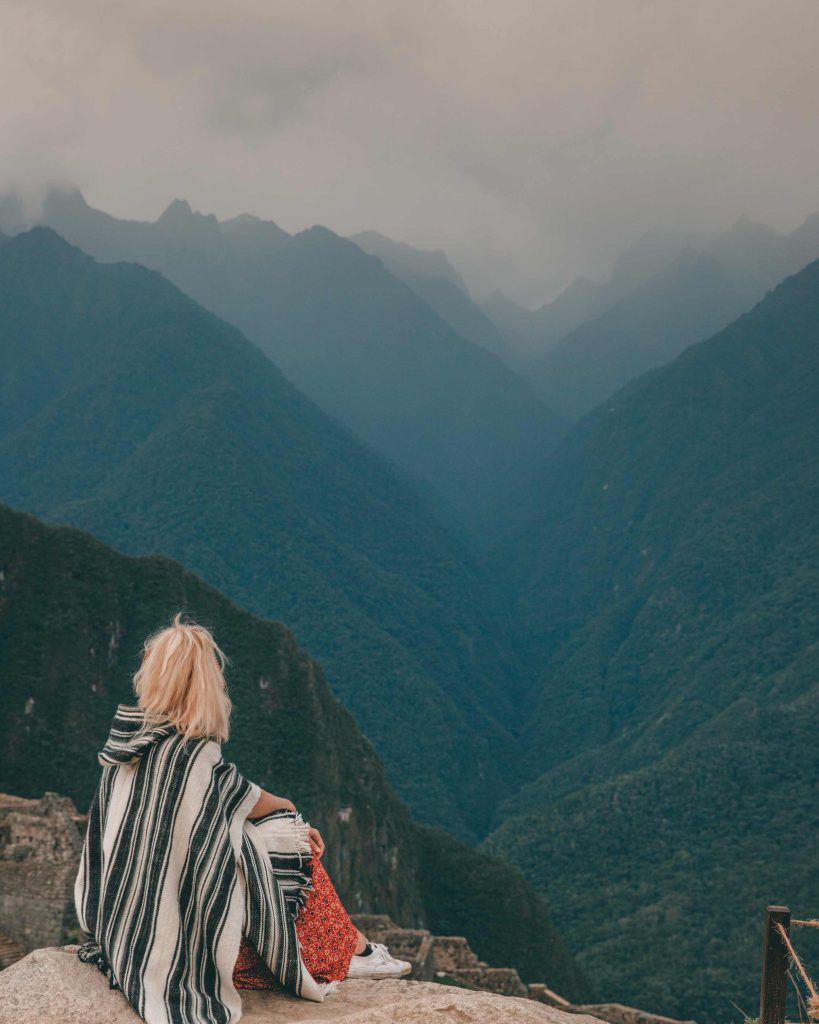

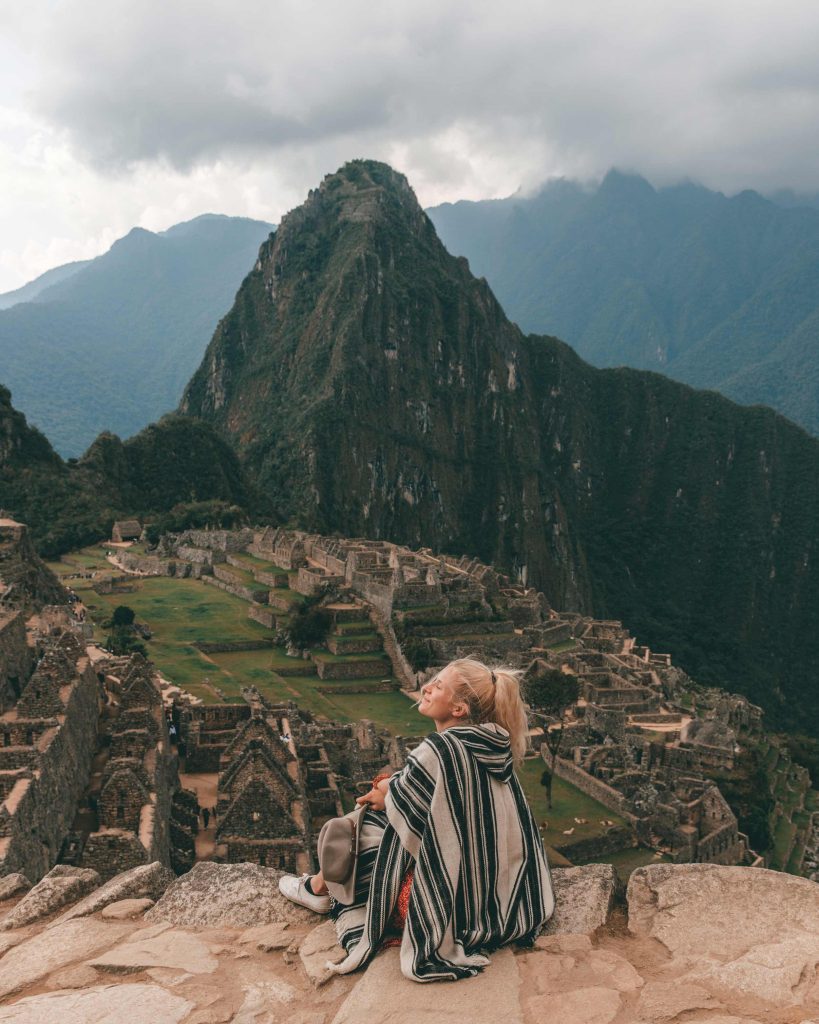











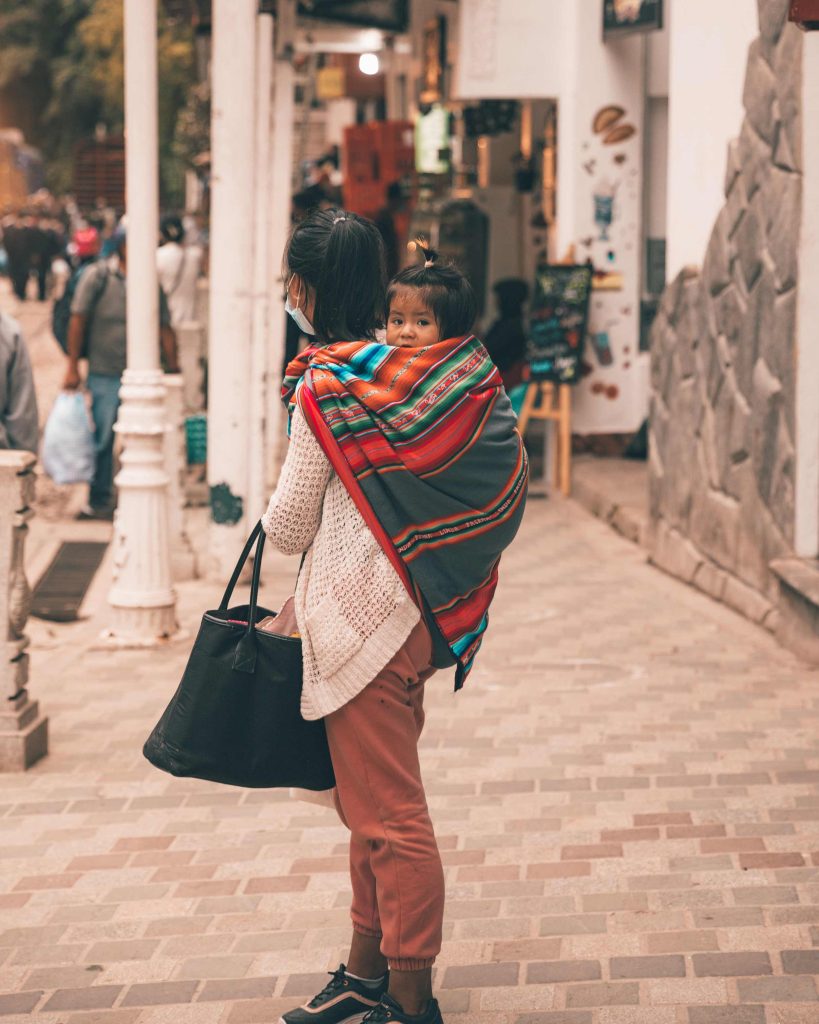

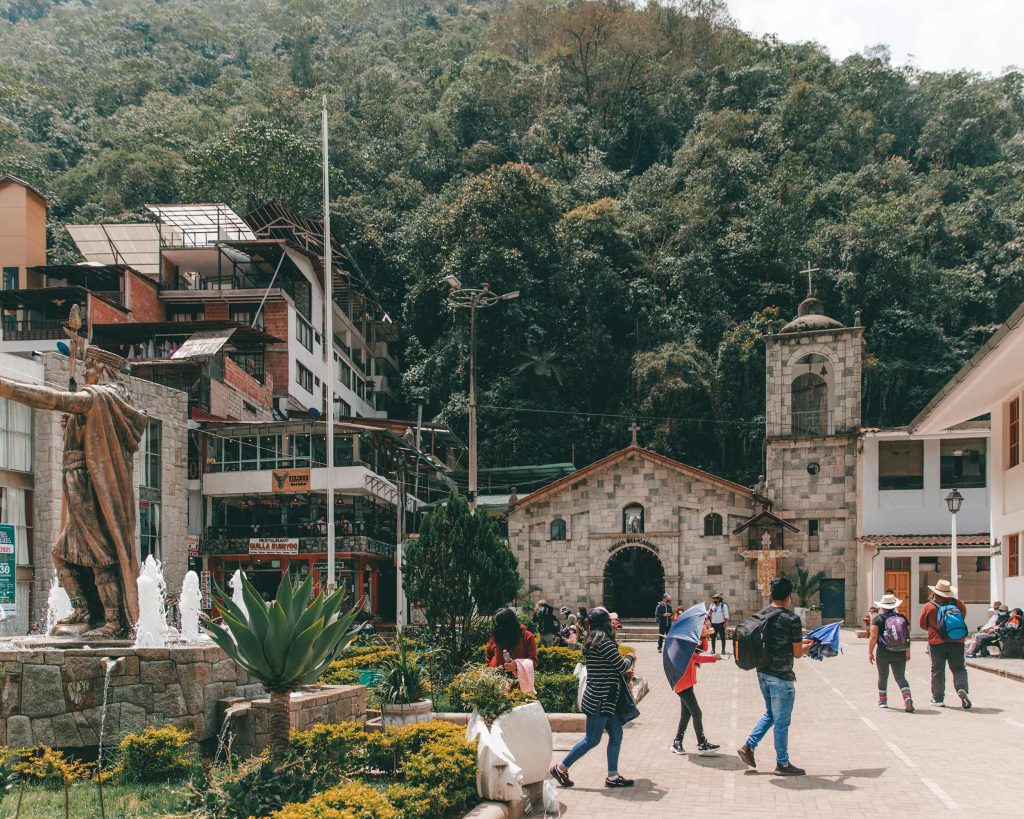










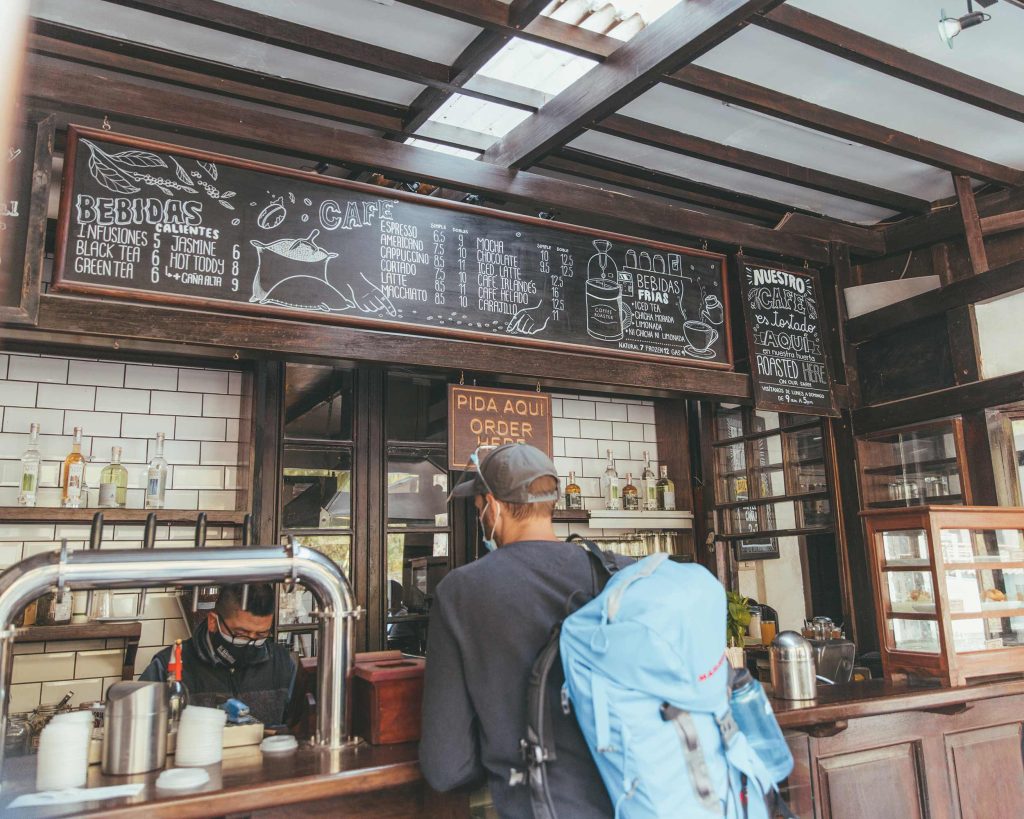





[…] Read more about “How to visit Machu Picchu” […]
[…] ↠ Read more: “How to visit Machu Picchu” […]